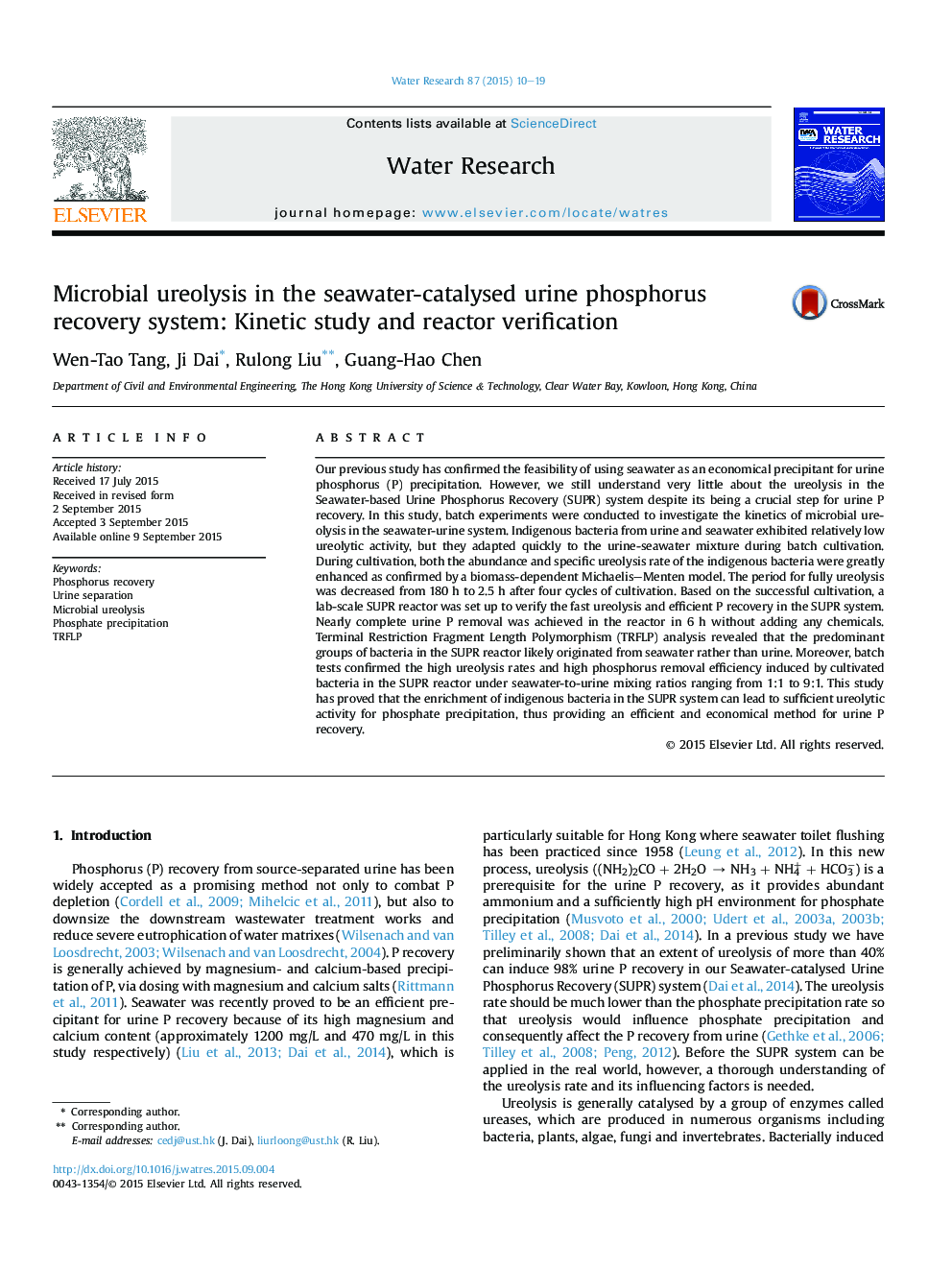| کد مقاله | کد نشریه | سال انتشار | مقاله انگلیسی | نسخه تمام متن |
|---|---|---|---|---|
| 6365941 | 1623081 | 2015 | 10 صفحه PDF | دانلود رایگان |
- Ureolytic activity of seawater-urine indigenous bacteria can be greatly enhanced by cultivation.
- Nearly complete urine P recovery was achieved in the reactor without adding any chemicals.
- The predominant groups of bacteria in the SUPR reactor likely originated from seawater.
Our previous study has confirmed the feasibility of using seawater as an economical precipitant for urine phosphorus (P) precipitation. However, we still understand very little about the ureolysis in the Seawater-based Urine Phosphorus Recovery (SUPR) system despite its being a crucial step for urine P recovery. In this study, batch experiments were conducted to investigate the kinetics of microbial ureolysis in the seawater-urine system. Indigenous bacteria from urine and seawater exhibited relatively low ureolytic activity, but they adapted quickly to the urine-seawater mixture during batch cultivation. During cultivation, both the abundance and specific ureolysis rate of the indigenous bacteria were greatly enhanced as confirmed by a biomass-dependent Michaelis-Menten model. The period for fully ureolysis was decreased from 180Â h to 2.5Â h after four cycles of cultivation. Based on the successful cultivation, a lab-scale SUPR reactor was set up to verify the fast ureolysis and efficient P recovery in the SUPR system. Nearly complete urine P removal was achieved in the reactor in 6Â h without adding any chemicals. Terminal Restriction Fragment Length Polymorphism (TRFLP) analysis revealed that the predominant groups of bacteria in the SUPR reactor likely originated from seawater rather than urine. Moreover, batch tests confirmed the high ureolysis rates and high phosphorus removal efficiency induced by cultivated bacteria in the SUPR reactor under seawater-to-urine mixing ratios ranging from 1:1 to 9:1. This study has proved that the enrichment of indigenous bacteria in the SUPR system can lead to sufficient ureolytic activity for phosphate precipitation, thus providing an efficient and economical method for urine P recovery.
342
Journal: Water Research - Volume 87, 15 December 2015, Pages 10-19
